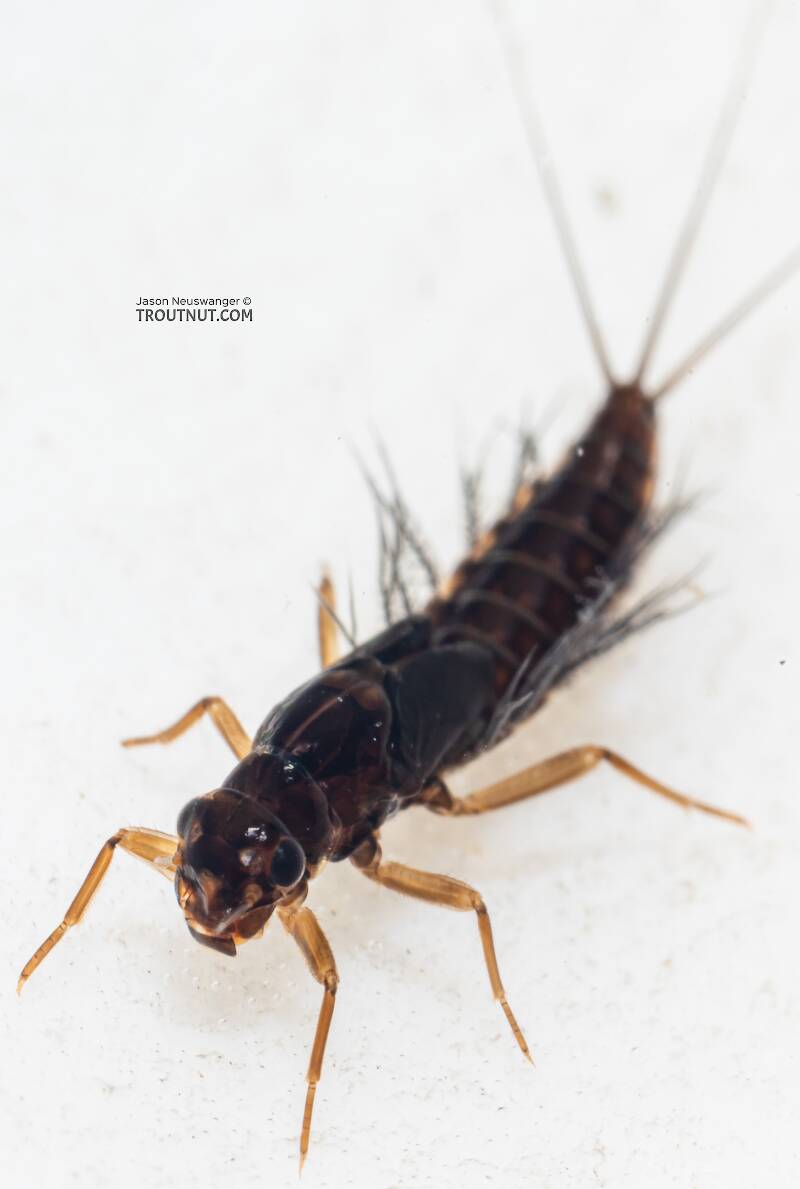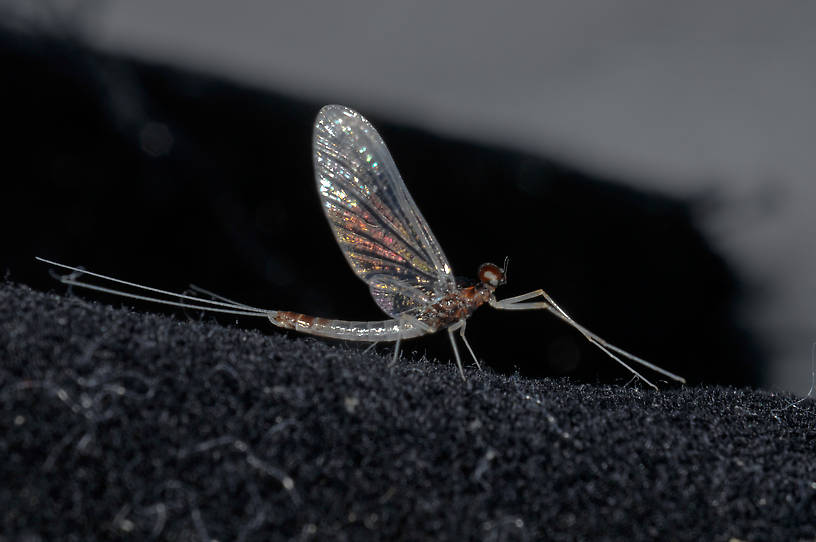
Hex Mayflies
Hexagenia limbata
The famous nocturnal Hex hatch of the Midwest (and a few other lucky locations) stirs to the surface mythically large brown trout that only touch streamers for the rest of the year.


Mayfly Species Neoleptophlebia memorialis
The origin of the name of this species is interesting, as described in the original publication (Eaton 1884): "I have assigned another to this species, which has reference
to its original captor, whose untimely death was primarily due to exposure in the course of the expedition when the insect was obtained." It does not say who the captor was.
I guess mayfly collecting is dangerous business! That's especially true given that it would have been collected mid-summer, because the original description only included the male adult.
Species Range
Physical description
Most physical descriptions on Troutnut are direct or slightly edited quotes from the original scientific sources describing or updating the species, although there may be errors in copying them to this website. Such descriptions aren't always definitive, because species often turn out to be more variable than the original describers observed. In some cases, only a single specimen was described! However, they are useful starting points.
Male Spinner
Wing length: 7 mm
This is a species with rather highly contrasting colors. Top of head and thorax are black, the tip of the abdomen is brown, the intervening part is white. The legs are pale brownish with white tarsi. The wings are whitish, a little milky along the costa the entire length but more so in the region of the stigma, where cross veins are very obscure, few in number, straight and unbranched. The extreme wing base is tinged with brown.
Abdominal segments 3 to 6 are white with touches of brown on the border behind the spiracles and on the spiracles themselves. The ganglia show through and are yellow. Segment 2 is pale brown and 7 to 10 are darker.
The basal joint of the forceps is somewhat irregularly tapering to its apical 4th and then widened slightly to the tip. The 3rd segment is nearly as long as the 2nd but much more slender. The penes are separated by a goblet-shaped notch. The sperm duct ends in a slender terminal tube behind which externally stands a long, sharp, curving spine directed posteriorly, its length more than half the depth of the notch and its tip surpassing the tip of the sperm duct (see fig. 134).
Specimens of the Mayfly Species Neoleptophlebia memorialis
1 Male Spinner
1 Nymph

Start a Discussion of Neoleptophlebia memorialis
References
- Eaton, A.E. 1884. A revisional monograph of recent Ephemeridae or mayflies. Transactions of the Linnean Society of London, 2nd Series, Zoology 3(1): 1-352.
- Knopp, Malcolm and Robert Cormier. 1997. Mayflies: An Angler's Study of Trout Water Ephemeroptera . The Lyons Press.
- Needham, James G., Jay R. Traver, and Yin-Chi Hsu. 1935. The Biology of Mayflies. Comstock Publishing Company, Inc.
Mayfly Species Neoleptophlebia memorialis
Species Range
Resources
- NatureServe
- Integrated Taxonomic Information System
- Global Biodiversity Information Facility
- Described by Eaton (1884)


